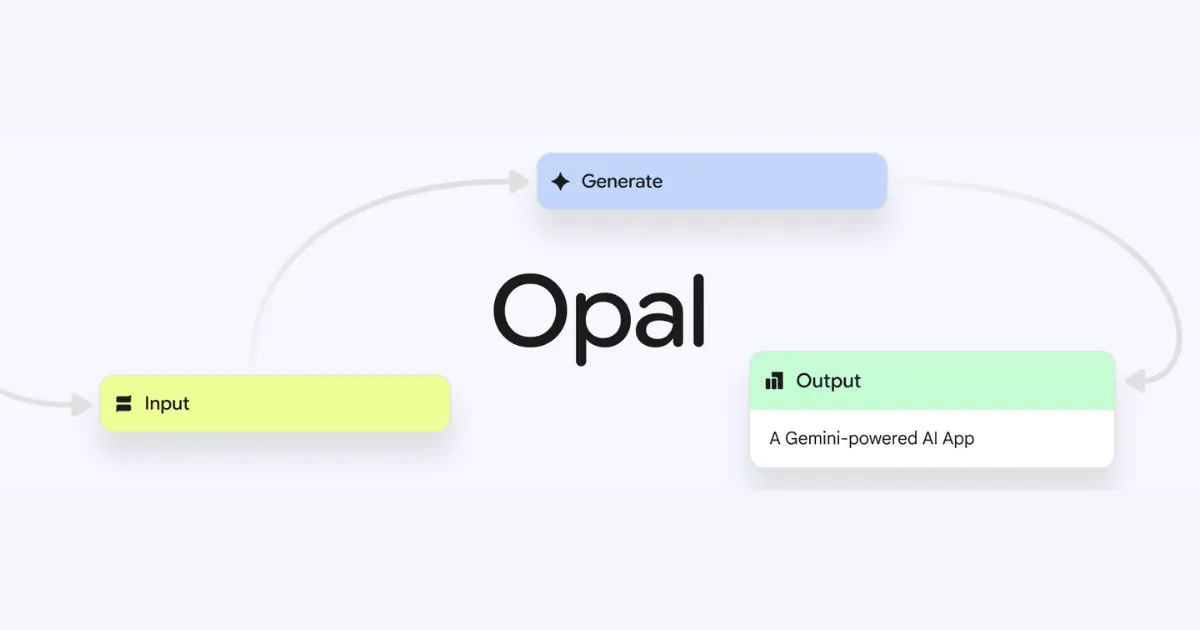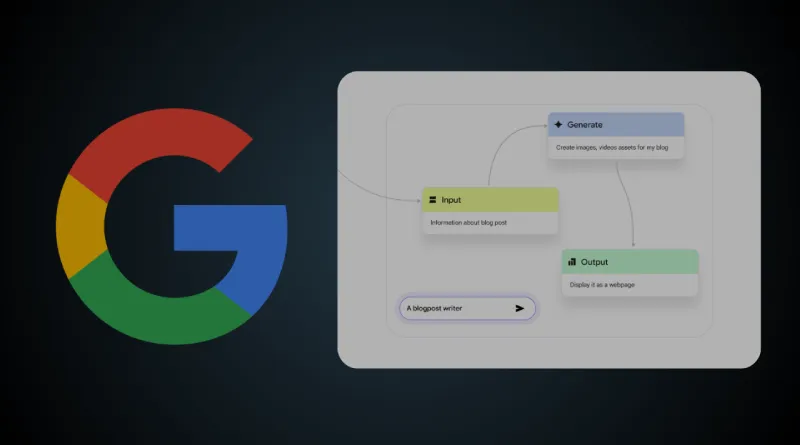Google’s New Opal Tool Turns Prompts into Apps: A Game-Changer for No-Code Development
In a bold leap toward democratizing app development, Google has unveiled Opal, an innovative AI-powered tool that transforms natural language prompts into fully functional mini web applications, no coding required. Launched on July 24, 2025, in a US-only public beta through Google Labs, Opal is redefining how creators, entrepreneurs, and hobbyists bring their ideas to life. By leveraging Google’s advanced AI models, such as Gemini 2.5, Veo 3, and Imagen 4, Opal enables users to craft apps with intuitive visual workflows, making app development accessible to non-technical users. This article explores Opal’s features, its impact on the no-code movement, unique insights into its potential, and its relevance in local contexts, drawing from credible sources to deliver an engaging and informative perspective.
What is Opal?
Opal is a research product aimed at making app development easier, which can be done by letting the user express in natural language what he wants an app to do. Opal interprets these prompts into a visual workflow, chain-linking inputs, AI model calls, and tools into a working application, as outlined on the Google Developers Blog. They have the ability to use ready-mades directly in the gallery or create their own template from scratch, suitable to different requirements such as virtual games or specific video advertisements. The drag-and-drop interface and editing in natural language remove any requirements of code expertise, which makes Opal a leader in the new trend of vibe-coding, or what is being termed as app-developing based on natural language and artificial intelligence, and requires no expertise.
Another outstanding feature of Opal is an editor where we can see the workflow of the app. These steps, including input, generation, and output, are all displayed as clickable boxes so that the user can view and even manipulate the prompts without coming anywhere near code. When done, applications may be uploaded to the web and connected through a free URL so that anybody having a Google account could use them. This is an easy shared functionality that ZDNET pointed out, so Opal is perfectly suited to faster prototyping, productivity apps or tools, or creative projects, and medicines across the technical and non-technical user base.
The No-Code Revolution and Opal’s Role
The release of Opal can be considered in line with the soaring no-code/low-code industry, which is expected to surge at rates greater than 20 percent per year, as Gartner suggests. Such rivals as Canva, Figma, or Replit already capitalize on this trend, allowing non-developers to build apps without a single line of code. What makes it special, however, is that Opal has integrated the proprietary AI models that Google provides. i.e., Gemini 2.5 would generate written material, Veo 3 video, and Imagen 4 images, and the user can easily create a rich, multimedia application. According to a product manager at Google—Elle Zadina, in a demo video—Opal provides users with access to control and transparency without having to go through long codebases.
The first visual design of the tool, according to India Today, is aimed at the general population, including hobbyists and marketers with basic technical knowledge that might be overwhelmed by traditional coding. Such accessibility is especially relevant in places such as India, where the digital economy is developing with more than 700 million internet users in 2025 (Statista). The Indian startup ecosystem, which is among the largest in the world, would have the potential to use Opal to trial out apps fast and avoid hiring development teams, which are expensive to build. The US-only beta does, however, restrict it to a somewhat narrow scope and user base, with Indian users reportedly eagerly waiting for the worldwide release.

Unique Insights: Opportunities and Challenges
The advantages of Opal are that it enables the non-technical user to be more powerful but also creates some special considerations. As opposed to most no-code platforms, which are traditional, the use of Google AI means the outputs of Opal are high-quality; however, it leads to dependence on proprietary systems. This might restrict personalization to advanced users or cast doubt on data security since apps get hosted on Google servers. Opal is now focused on front-end logic and supports only simple backend functionality such as databases or user authentication, as observed on TechCrunch. This could be covered in future updates, although at this moment, Opal is already rocking the production of lightweight, sharable apps.
On a local note, the opportunities of Opal in India are enormous but challenging. The local environment sets a broad range of languages that are spoken in the country (there are over 20 official languages), thus requiring multilingual immediate assistance, which Opal has not been able to verify. As well, the Digital Personal Data Protection Act (DPDP) in India lays stress on the concept of data sovereignty, thereby casting doubt over how user data of Opal is maintained in the cloud of Google. The potential implication of Opal for Indian entrepreneurs is that it may facilitate the development of an app used for e-commerce or educational purposes, but the solution should be effective in resolving some challenges implied by these local peculiarities.
Competitive Landscape and Industry Impact
Opal has a crowded market, where it will compete with Microsoft GitHub Spark, Amazon Kiro, and the startup Cursor. Although Spark and Kiro target business-level solutions, Opal has a visual interface and a library of templates, which makes it a perfect fit with casual creators, according to ZDNET. There is a lot of social media buzz around the subject of X, and users such as @rohanpaul_ai have been raving about how useful Opal is to create AI helpers without the need to code. Nonetheless, posts also specify its limitation to being used in the US, which raises the expectation of international access.
The current trend in the broader industry indicated by Michael Truell of Anysphere suggests that in 2026, AI may perform 20% of the software engineering work. By launching Opal, Google is assuming a critical role in this transformation as they break with the current state of affairs in software development. It may help quicken the pace of innovation in areas such as education, marketing, and the running of small businesses because it can take minutes to develop apps as opposed to weeks in more conventional systems.
Looking Ahead: Opal’s Future
Being an experimental tool, Opal will mature according to the feedback given by the user. Such improvements as backend integration or multilingual support may be possible in the future, based on Google policies on community-driven development at the Google Developers Blog. The low risk of experimenting with app creation through Opal can be said to be beneficial to users, but it is important to warn that data hosting issues with sensitive apps will be considered. In India, in a country where technology adoption is fast, Opal can give rise to a new generation of creators once localized.
To sum up, Opal can be regarded as a valuable milestone on the way to the inclusivity and ease of usability of app development processes. Using AI to transform prompts into apps, Google is not only removing a hurdle to encourage non-coders but also encouraging creativity and productivity. Privacy, accessibility, and functionality are challenges to tackle since the influence of the tool on global ecosystems, such as the one thriving in India and the field of digital culture, will depend on it when the tool matures. Opal is currently a bright case of no-code development.
Disclaimer
The information presented in this blog is derived from publicly available sources for general use, including any cited references. While we strive to mention credible sources whenever possible, Web Techneeq – Seo Company in Andheri does not guarantee the accuracy of the information provided in any way. This article is intended solely for general informational purposes. It should be understood that it does not constitute legal advice and does not aim to serve as such. If any individual(s) make decisions based on the information in this article without verifying the facts, we explicitly reject any liability that may arise as a result. We recommend that readers seek separate guidance regarding any specific information provided here.

